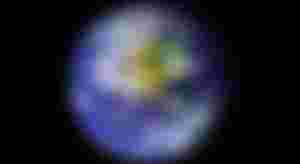The shiny blue marble that has fascinated humans since they first began to steer across its surface. And why shouldn’t it fascinate us? Additionally to being our home and thus the place where life as we all realize it originated, it remains the only planet we all know of where life thrives.
Plate Tectonics Keep the world Comfortable:
Earth is the sole planet within the system with tectonics. Basically, the outer crust of the planet is choppy into regions mentioned as tectonic plates. These are floating on top of the magma interior of the planet and should move against one another.
Earth is Almost a Sphere:
Many people tend to think that the planet could also be a sphere. In fact, between the 6th century BCE and thus the age, this remained the scientific consensus. But due to modern astronomy and spaceflight, scientists have since come to understand that the planet is basically shaped kind of a flattened sphere (aka. an oblate spheroid).

Earth is typically made of Iron, Oxygen, and Silicon:
32.1 % iron, 30.1% oxygen, 15.1% silicon, and 13.9% magnesium are found on the surface of the earth. Of course, most of this iron is basically located at the core of the planet. If you'll actually get down and sample the core, it'd be 88% iron. And if you sampled the Earth’s crust, you’d find that 47% of its oxygen.
70% of the Earth’s Surface is roofed in Water:
When astronauts first went into space, they looked back at the planet with human eyes for the first time. supported their observations, the planet acquired the nickname the “Blue Planet.

The Atmosphere of earth Extends to a Distance of 10,000 km:
Earth’s atmosphere is thickest within the first 50 km from the surface approximately, but it actually reaches bent about 10,000 km into space. it's made up of five main layers – the Troposphere, the Stratosphere, the Mesosphere, the Thermosphere, and thus the Exosphere.
Molten Iron Core of Earth Creates a Magnetic Field:
The Earth is kind of an excellent big magnet, with poles at the very best and bottom almost the actual geographic poles. The magnetic flux it creates extends thousands of kilometers out from the surface of the planet-forming an area called the “magnetosphere“.
Time of earth's rotation around on its Axis:
It actually takes 23 hours, 56 minutes, and 4 seconds for the planet to rotate once completely on its axis, which astronomers ask as each day. Now wait for a second, doesn’t that mean that every day is 4 minutes shorter than we expect it is? You’d think that now would add up, day by day, and within a few months, the day would be night, and night would be the day.
But remember that the planet orbits around the Sun. Every day, the Sun moves compared to the background stars by about 1° – about the size of the Moon within the sky.
year on Earth isn’t 365 days:
It’s actually 365.2564 days. we append a further day in February every four years – 2004, 2008, 2012, etc.
Earth has 1 moon and a few of Co-Orbital Satellites:
Earth has 1 moon (aka. The Moon). Plenty is known about this body which we've written many articles about it, so we won’t enter much detail there.
Earth is that the sole Planet Known to possess Life:
We’ve discovered past evidence of water and organic molecules on Mars and thus the building blocks of life on Saturn’s moon Titan. we'll see amino acids in nebulae in the region. Earth is the sole place on which life has actually been discovered.


Wow dear theyareamazzing factorts